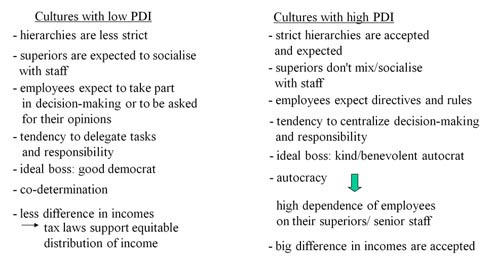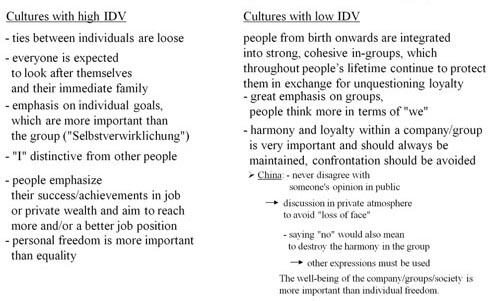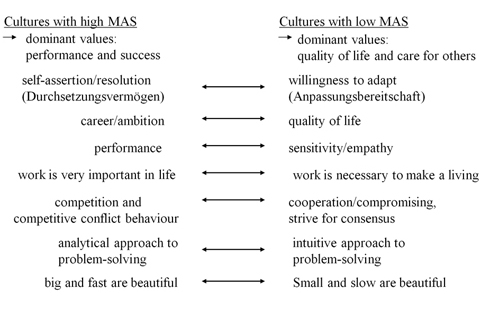II. Geert Hofstede ->five distinguishing features (dimensions)
Vorschau:
II. Geert Hofstede ? 5 distinguishing features (dimensions):
1. Power Distance Index (PDI)
→ extent to which inequalities of power and wealth are commonly accepted

2. Individuality Index (individuality versus collectivism - IDV)
→ extent to which individual interests prevail over the interests of a group

3. Masculinity Index (masculinity versus femininity - MAS)

4. Uncertainty Avoidance Index (UAI)
→ extent to which people feel threatened by uncertain or unknown situations

5. Long-Term Orientation versus Short-Term Orientation (LTO)

What are cultural standards (patterns) and what is their purpose?
- with variations they are valid for a majority of the members of a culture
- they describe and explain how a cultural group perceives and evaluates things, how they think and why they act in specific ways
- they regulate behaviour (how to act in certain situations and with other people)
- variations (individual and group specific) are tolerated within certain boundaries
- behaviours outside these boundaries are socially rejected and sanctioned
- people‘s own cultural standards are not perceived consciously any more after their successful socialisation ⇒makes understanding between cultures more difficult
- own cultural standards become conscious if they are compared with other cultures‘ standards
Dokument "Cultural patterns " herunterladen [.ppt][530 KB]
